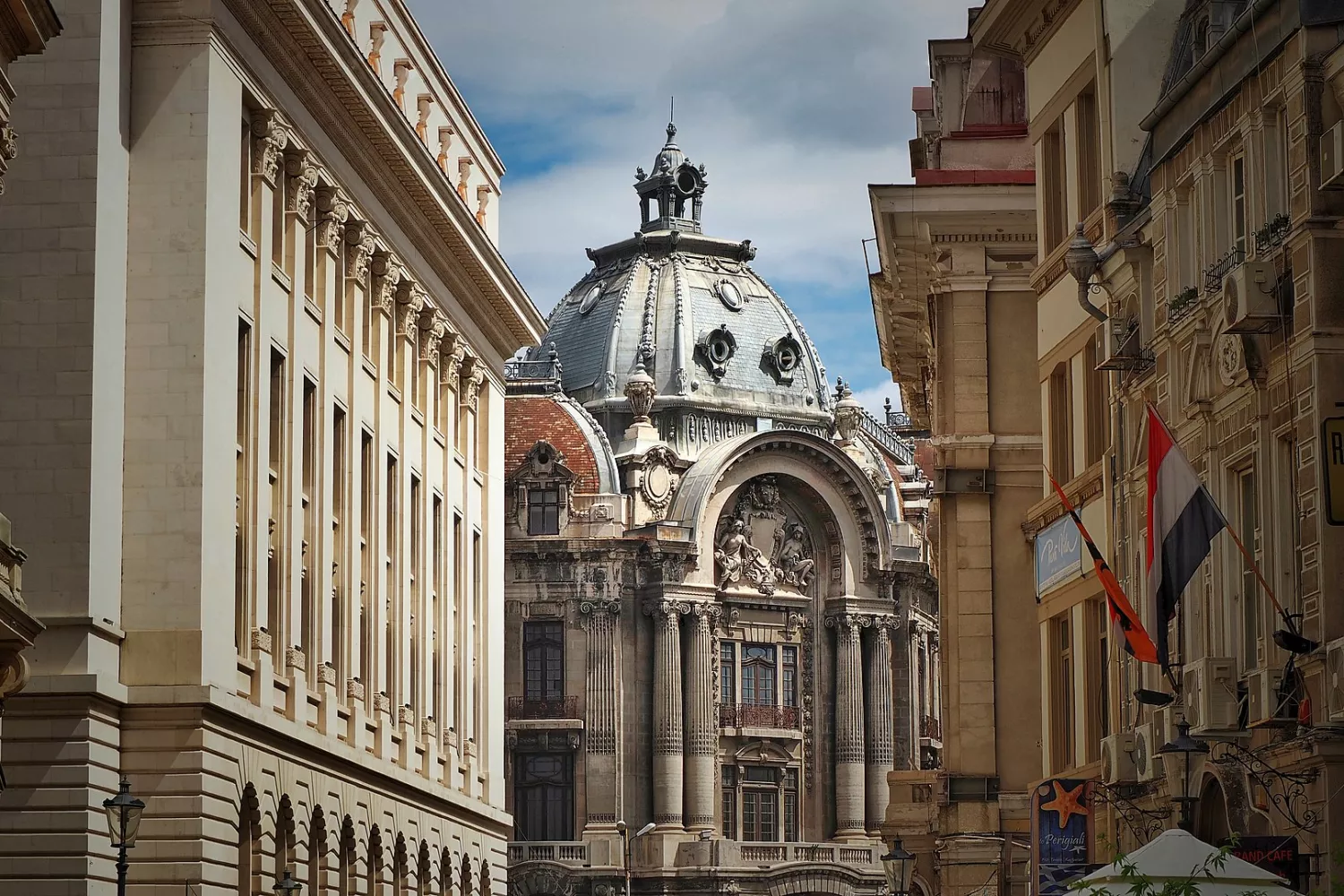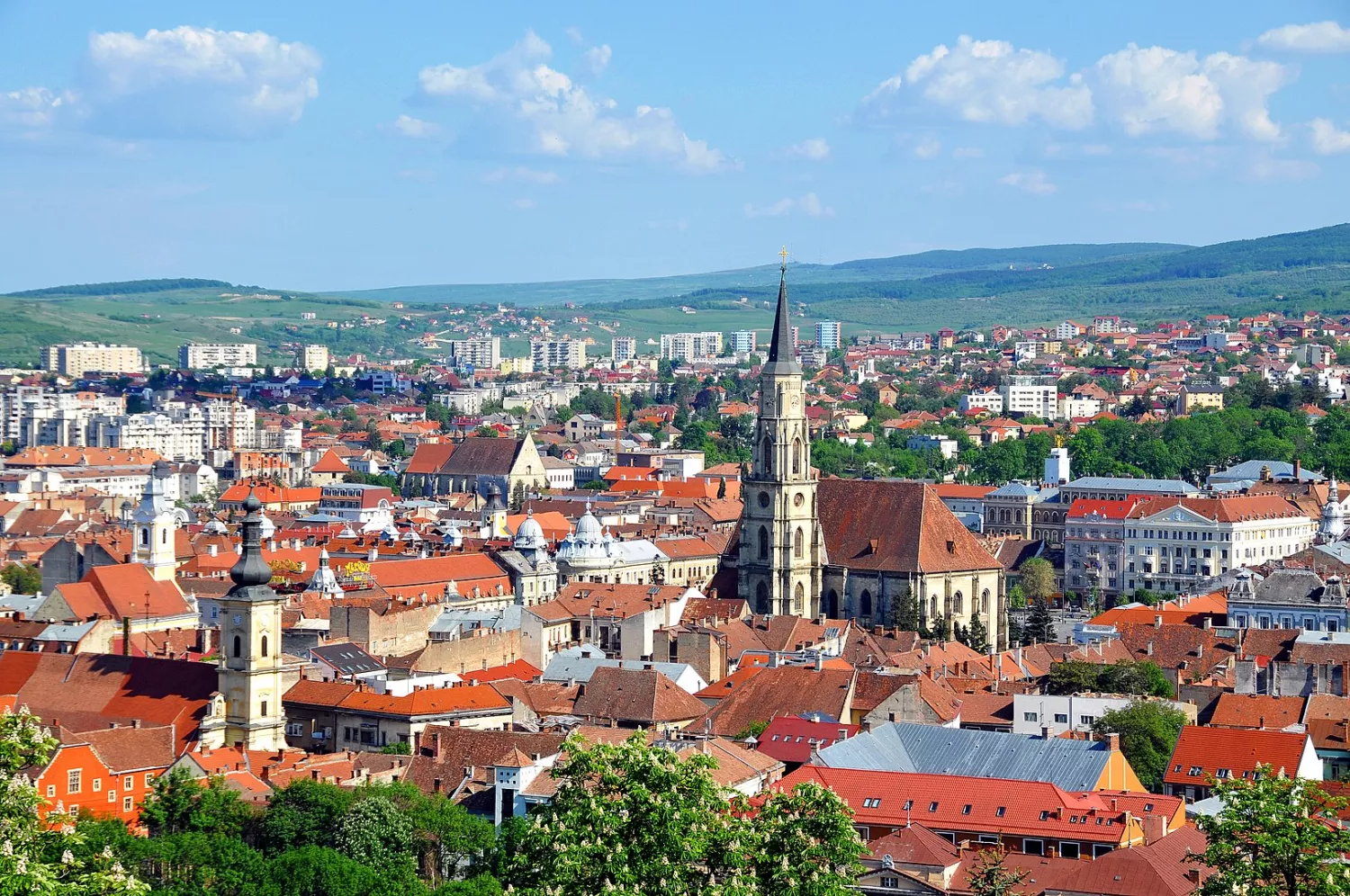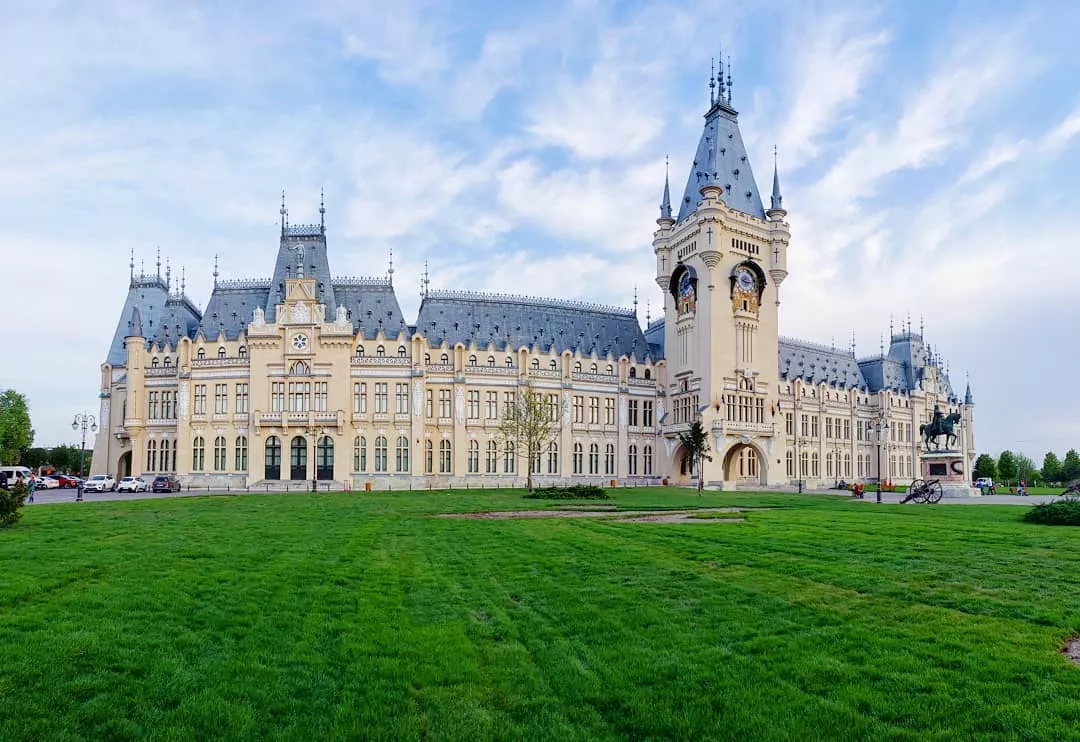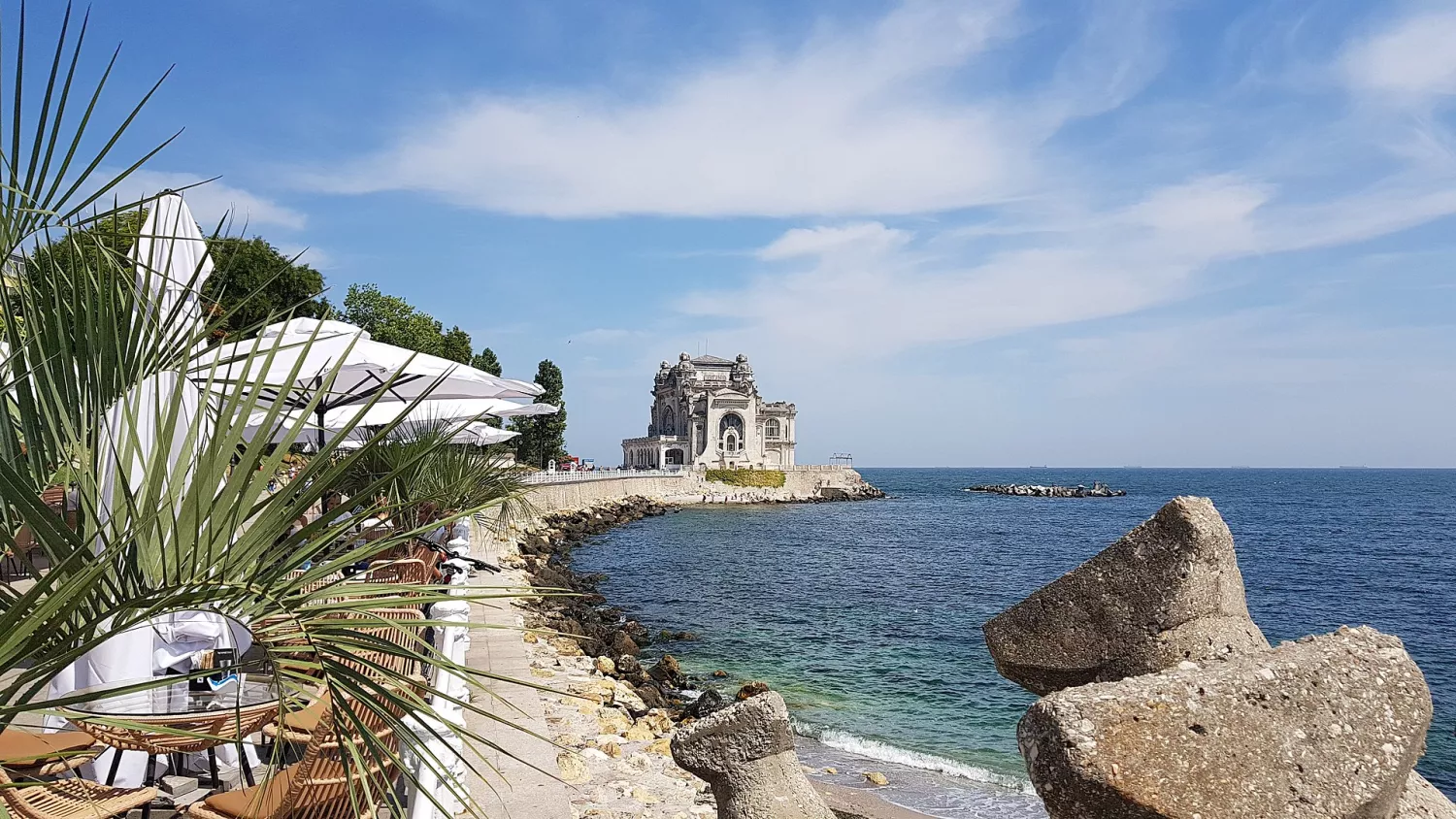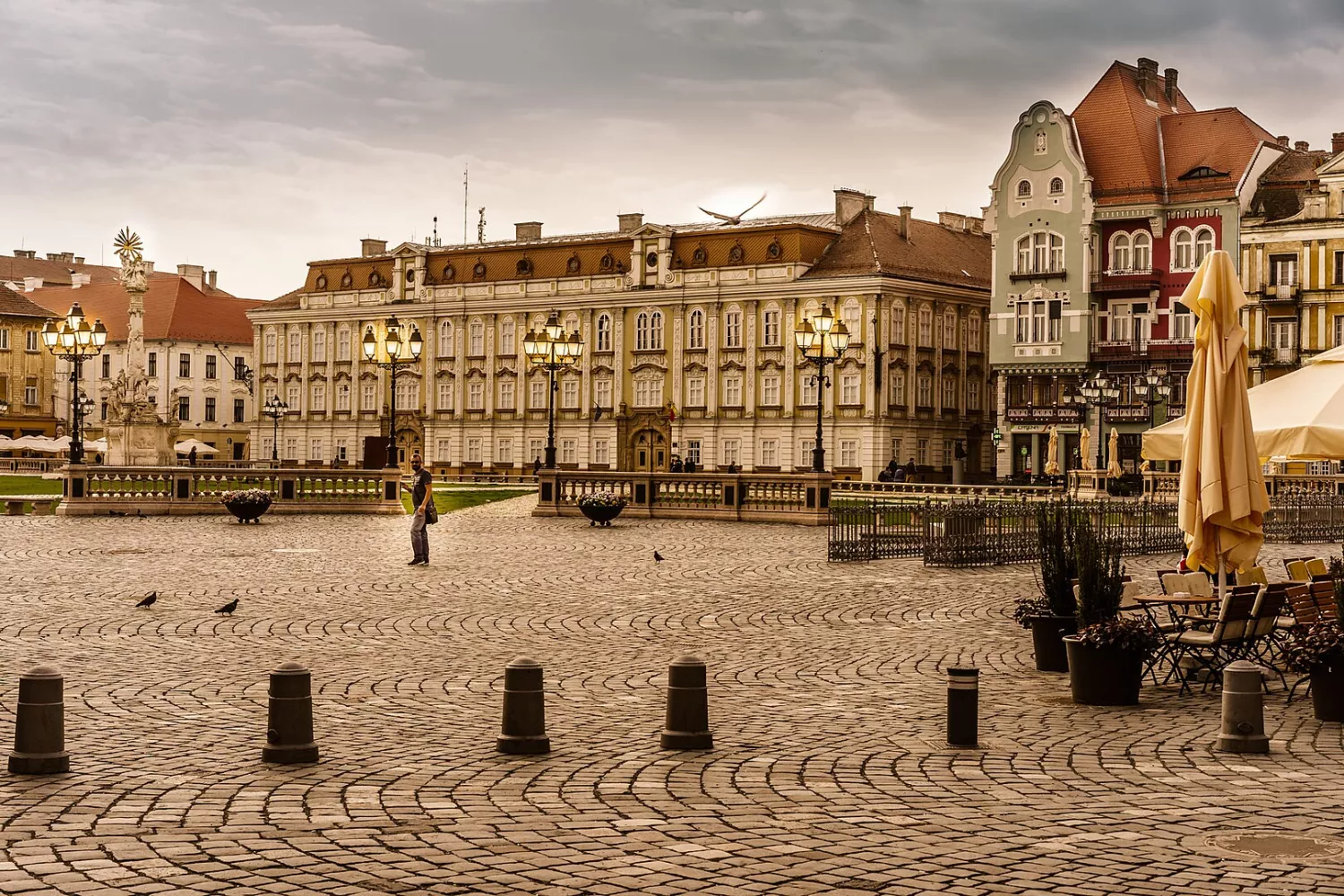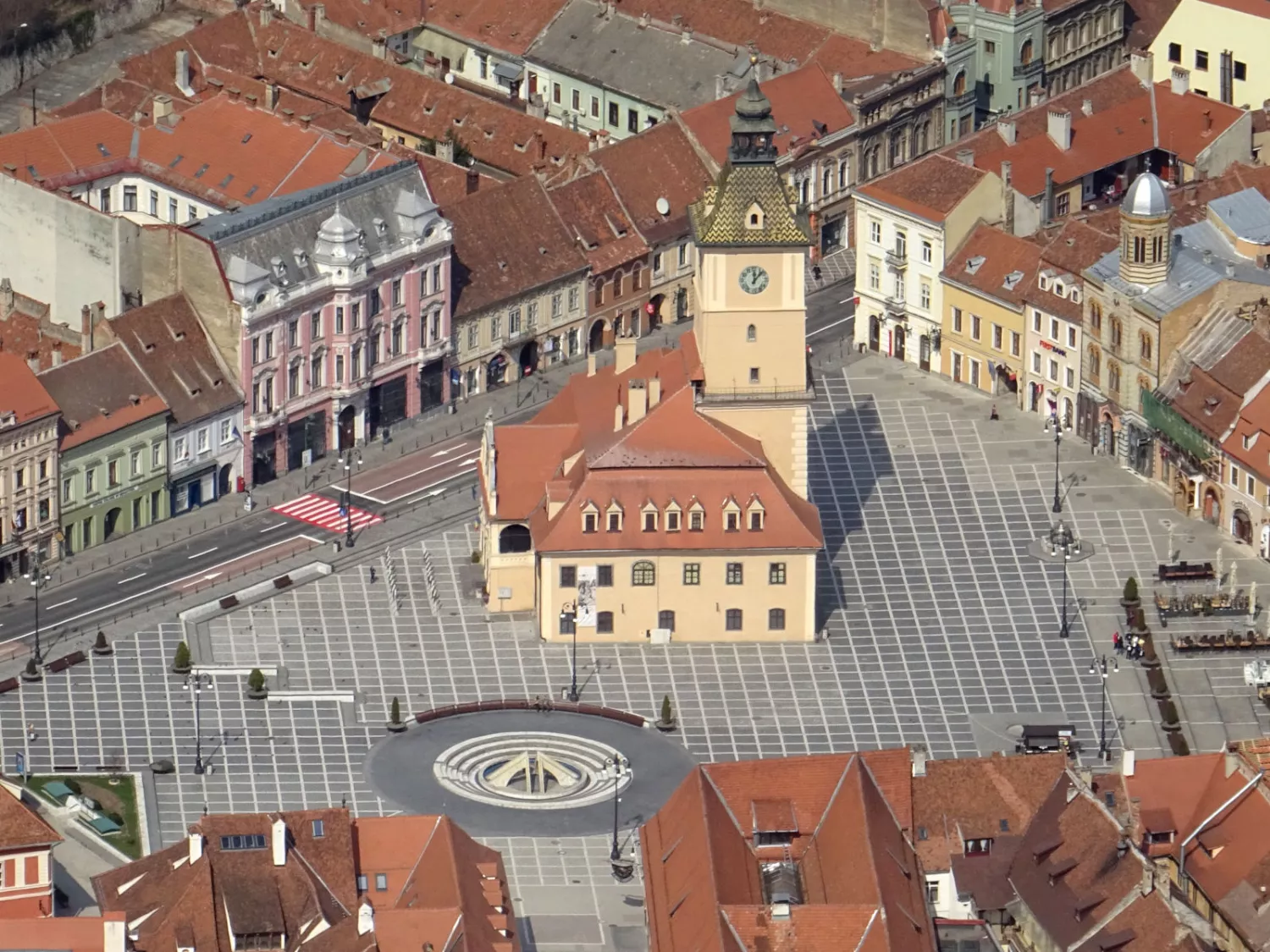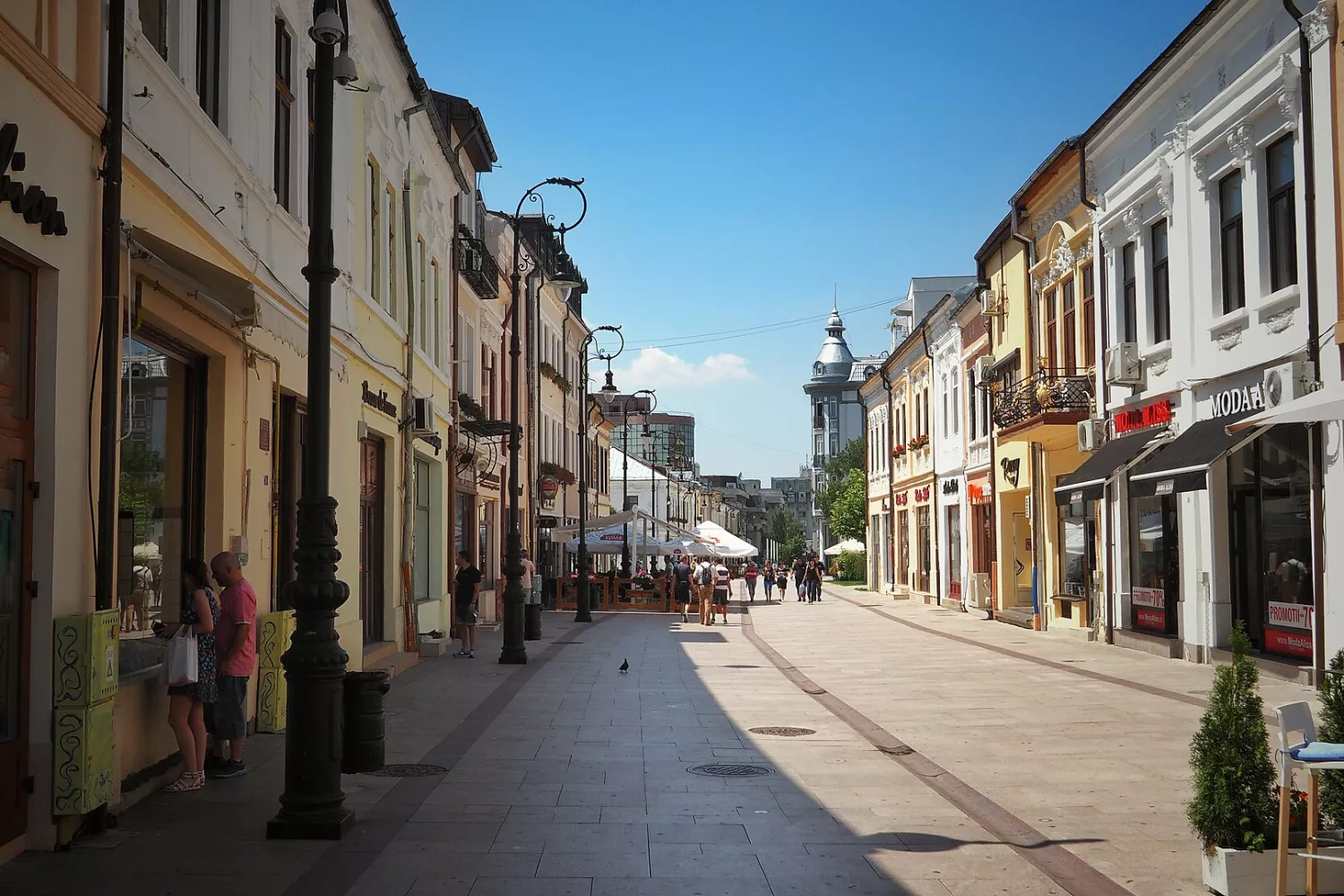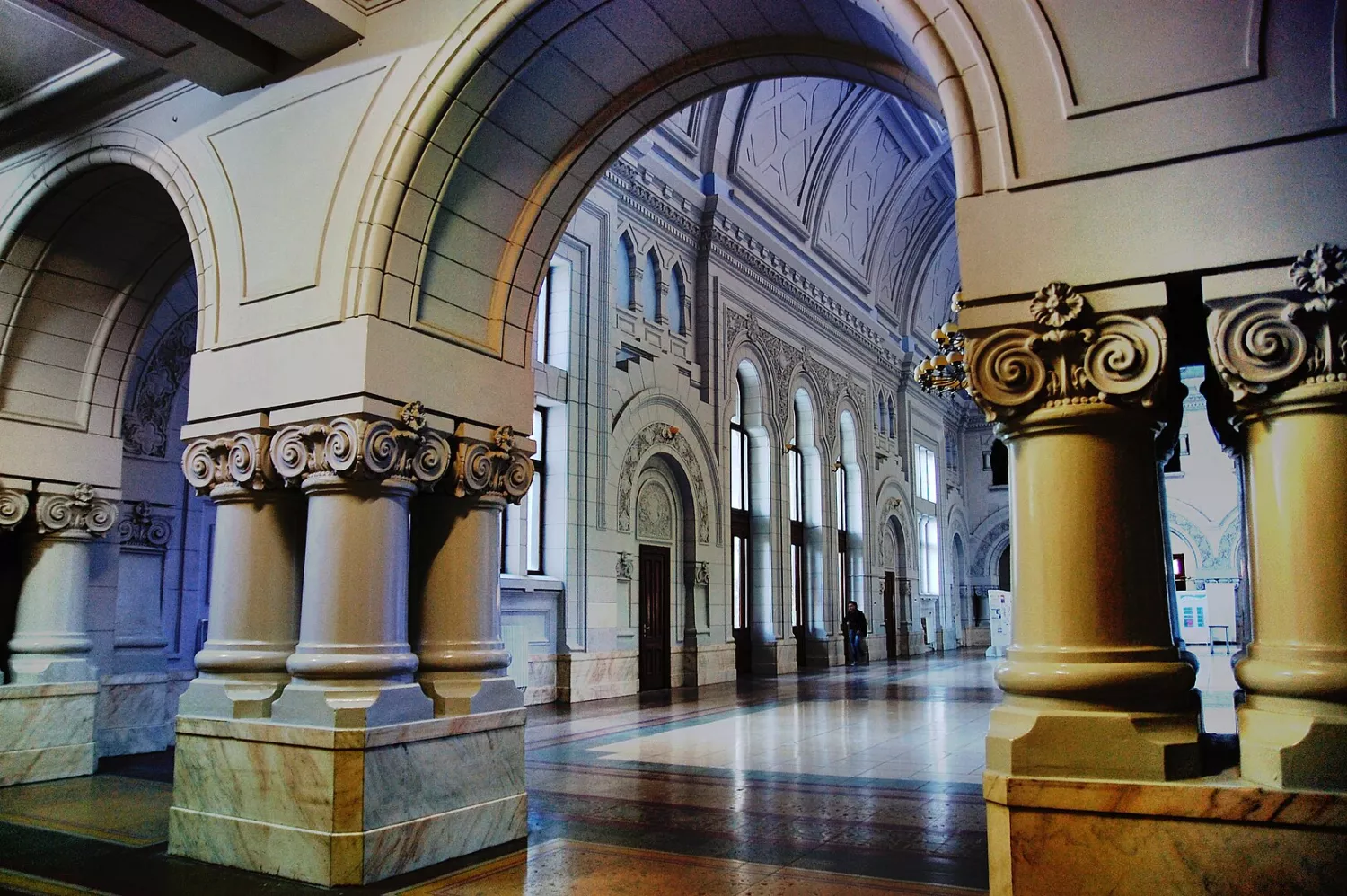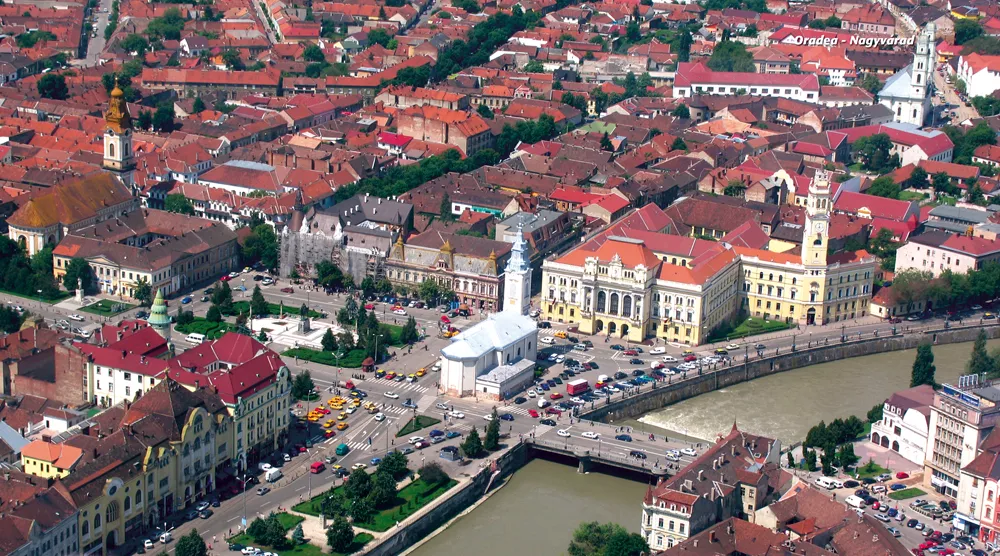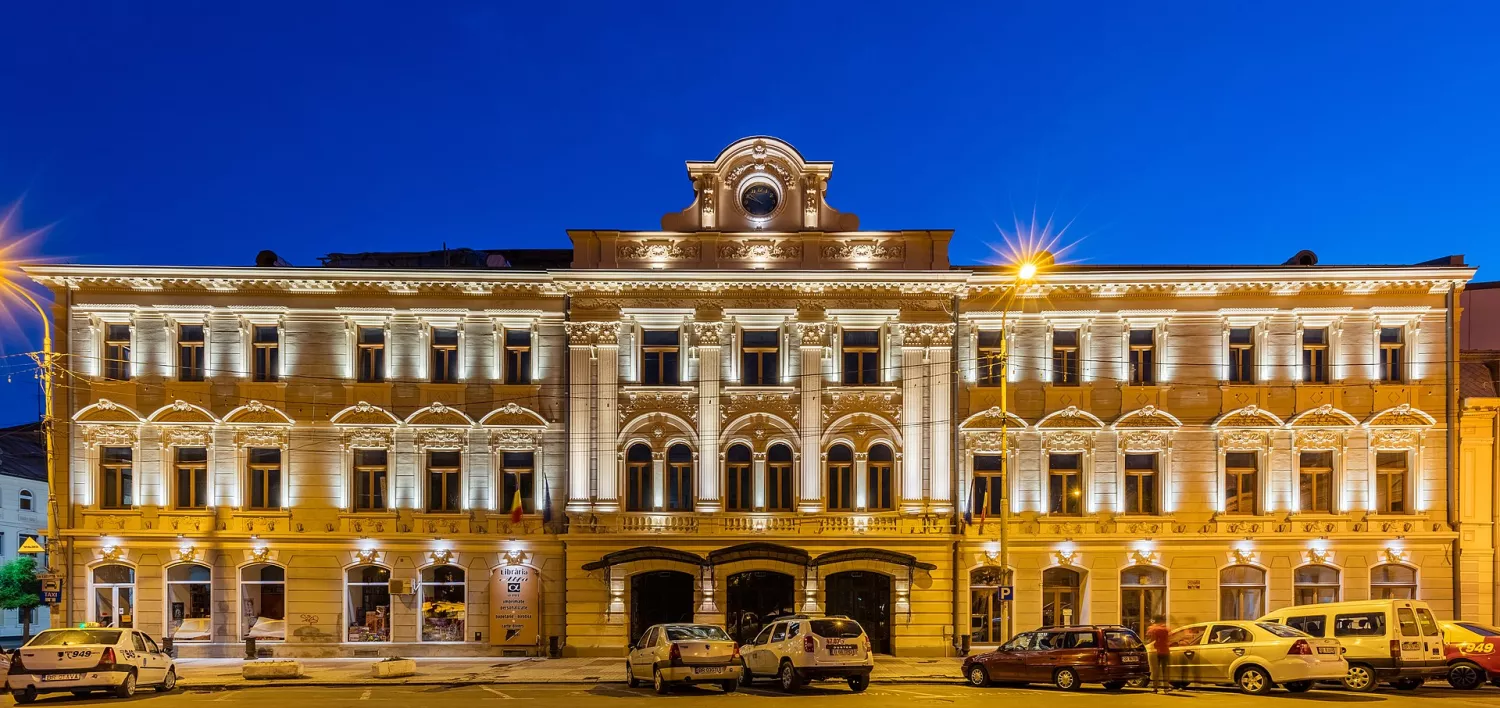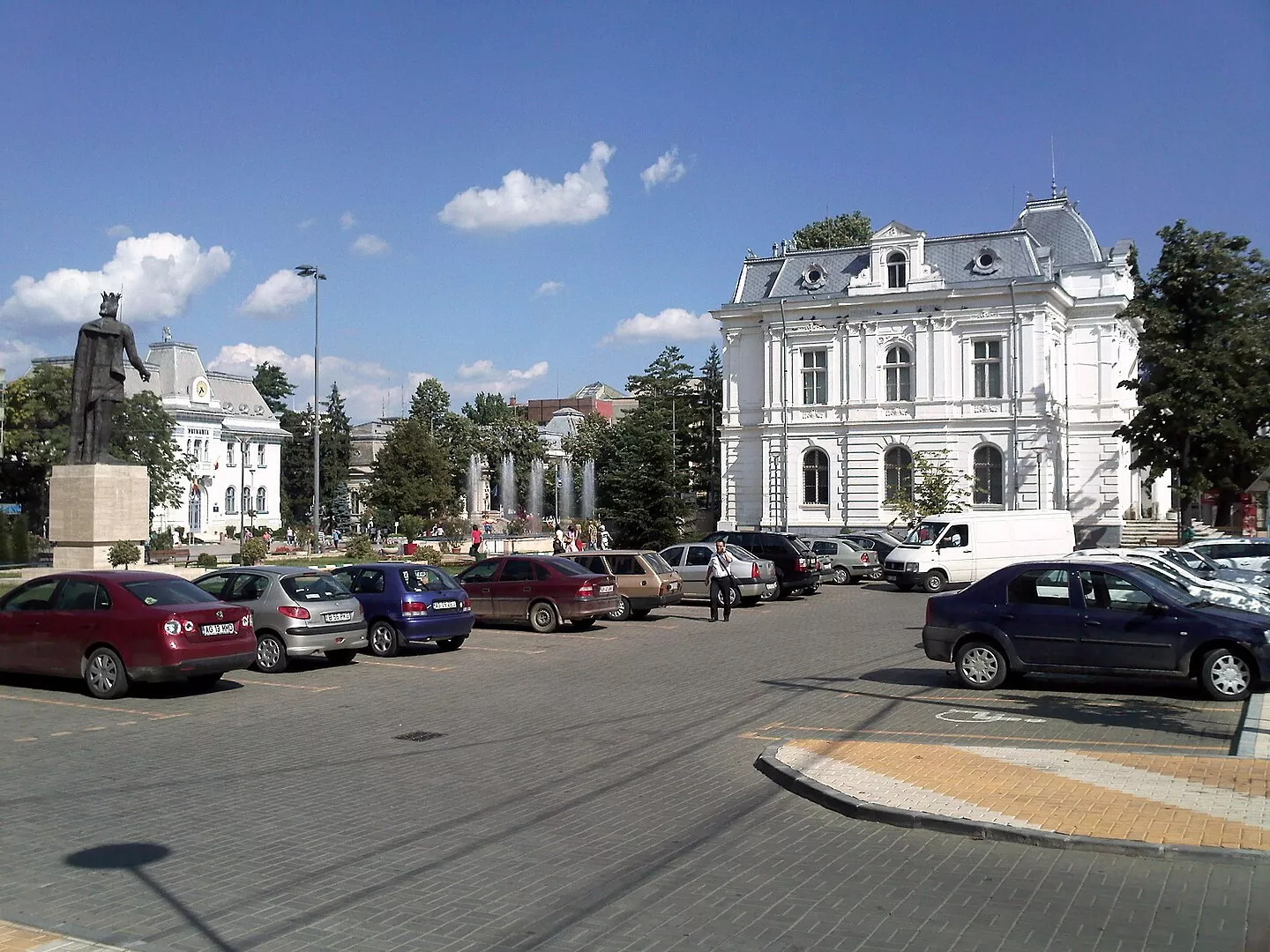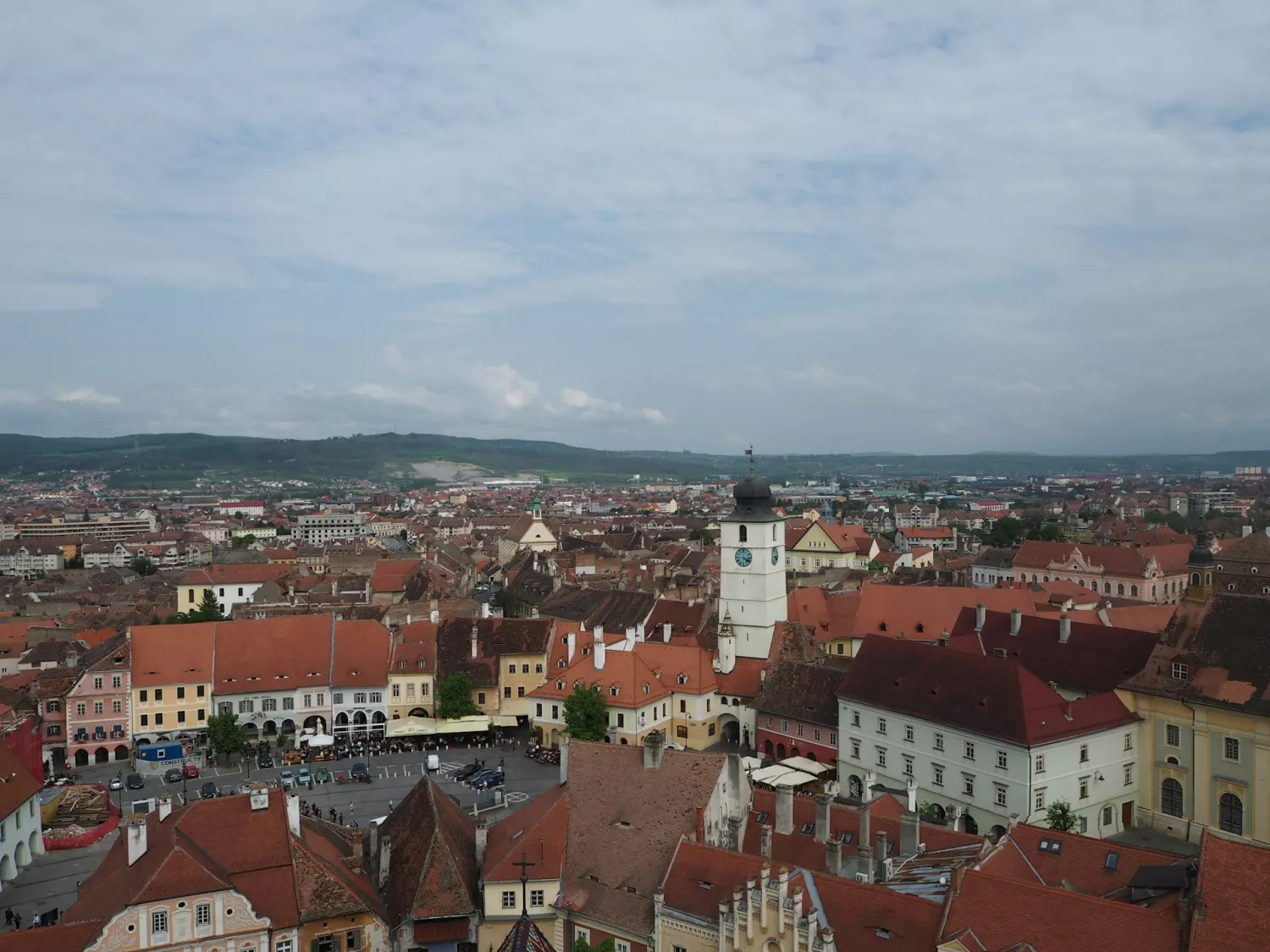Revealing the Top 15 Cities in Romania: Reasons to Visit
Romania, a land of vibrant culture, rich history, and breathtaking landscapes, is home to a myriad of charming cities waiting to be explored. In this guide, we set out on a journey to uncover the top 15 cities that showcase the diverse tapestry of Romania's allure. From the medieval citadels nestled in the heart of Transylvania to the vibrant cosmopolitan hubs along the Black Sea coast, each city offers its own unique blend of traditions, architecture, and experiences. Whether you're captivated by the timeless beauty of ancient castles, enchanted by the lively atmosphere of bustling market squares, or seeking solace in the tranquility of scenic countryside, Romania promises an unforgettable adventure. Join us as we delve into the reasons why these 15 cities should claim a prime spot on your travel itinerary, inviting you to discover the magic that awaits in every corner of this captivating country.
Table of Contents
Hide
Bucharest - Population: 1,716,961
Romania's bustling capital, nestled along the River Dâmbovița in southeastern Romania. With a rich history dating back to 1459, Bucharest emerged as a vibrant hub of culture, politics, and commerce. Boasting a diverse architectural landscape blending historical, interbellum, and modern influences, the city earned monikers like "Little Paris" and "Paris of the East" in its heyday. Today, Bucharest thrives as a beta global city, witnessing an economic and cultural renaissance. From its elegant boulevards to its burgeoning tech scene, Bucharest offers an enticing blend of tradition and innovation. Discover the allure of this dynamic metropolis, where ancient landmarks mingle with trendy cafes and cosmopolitan charm.
3 Reasons to visit Bucharest
Dynamic Cultural Fusion & Vibrant Cultural Scene: Bucharest, with its vibrant mix of old-world charm and modern energy, offers a captivating glimpse into Romania's rich history and dynamic present. Its dynamic cultural scene encompasses visual arts, performing arts, and nightlife, blending elements of both Romanian and international culture for a unique and diverse experience.
Architectural Marvels & Iconic Landmarks: Explore the city's diverse architectural landscape, from the grandeur of the Palace of Parliament to the elegant Arcul de Triumf modeled after its Parisian counterpart. Each landmark narrates Bucharest's rich history and architectural heritage, promising travelers a journey through time and culture.
Optimistic Spirit & Unconventional Charm: Experience Bucharest's infectious optimism and irreverent charm, where historic resilience meets contemporary flair. Amidst architectural marvels and iconic landmarks, the city offers a delightful blend of surprises and memorable experiences at every turn, showcasing its unique character and inviting travelers to explore its hidden gems.
Cluj-Napoca - Population: 286,598
Cluj-Napoca, also known simply as Cluj, stands as the second-most populous city in Romania and serves as the administrative seat of Cluj County in the northwestern region of the country. Positioned equidistantly between Bucharest, Budapest, and Belgrade, Cluj-Napoca holds a strategic geographical location in the Someșul Mic river valley, earning its unofficial status as the capital of the historical province of Transylvania. With a population exceeding 400,000 in its metropolitan area, Cluj-Napoca pulsates with a vibrant blend of cultures and traditions, attracting both permanent residents and a significant student population.
Steeped in over 2000 years of history, from its Roman origins to its status as a thriving modern metropolis, Cluj-Napoca exudes an undeniable charm that beckons visitors to explore its ancient streets and bask in its rich cultural tapestry. From its Gothic architectural marvels like St. Michael's Church to its bustling Union Square, adorned with 18th and 19th-century buildings, Cluj-Napoca offers a captivating blend of historical heritage and contemporary allure. As the dynamic heart of Transylvania, the city embraces its multicultural identity, fostering an environment of peace and cooperation among its diverse inhabitants.
With a flourishing academic, cultural, and economic landscape, Cluj-Napoca stands as a beacon of progress and vitality in the heart of Romania, earning accolades such as the European Capital of Youth in 2015 and hosting renowned events like Untold Festival and Transylvania International Film Festival. In Cluj-Napoca, time flows differently, inviting visitors to immerse themselves in its enchanting ambiance and discover the essence of Transylvania's vibrant spirit.
3 Reasons to visit Cluj-Napoca
Cultural Marvels: Cluj-Napoca boasts a rich cultural heritage that spans centuries, from its Roman origins to its role as a prominent cultural and religious center in Transylvania during the 16th century. With landmarks like St. Michael's Church and the Palace of Justice, visitors can immerse themselves in the city's architectural marvels while tracing its fascinating history through its iconic buildings.
Musical Escapade: For music enthusiasts and nightlife aficionados, Cluj-Napoca offers a vibrant scene that caters to diverse tastes. From renowned music festivals like Electric Castle and Untold, which draw international crowds with their electrifying performances, to the city's thriving club scene with venues like Club Midi and FORM Space, there's no shortage of entertainment options to keep the party going well into the night.
Creative Oasis: Beyond its historical and musical offerings, Cluj-Napoca surprises visitors with its creative and eclectic side. From quirky bars like Joben Bistro and Enigma, where steampunk aesthetics meet inventive cocktails, to vintage shops and independent designers showcasing unique fashion finds, the city exudes an artistic flair that's both innovative and welcoming. Whether you're exploring contemporary galleries like Galeria Quadro or discovering hidden gems in the city's vibrant neighborhoods, Cluj-Napoca promises a culturally enriching experience with a touch of whimsy.
Iași - Population: 271,692
Nestled in the northeastern reaches of Romania, Iași stands as a testament to the intertwining of history, culture, and intellectual vigor. As the pivotal economic and cultural hub of Moldavia, this ancient city has witnessed the ebb and flow of trade routes connecting distant lands for centuries. Proudly boasting its status as one of Romania's oldest settlements, Iași serves as a living canvas of Moldavian culture, with roots dating back to the late 1300s.
From nurturing the birth of the first Romanian newspaper to pioneering higher education with the establishment of the nation's premier university, Iași has been a beacon of enlightenment and progress. With over 100 Orthodox churches adorning its skyline, including architectural gems like the Saint Parascheva Metropolitan Cathedral, the city stands as a testament to spiritual devotion and artistic brilliance. Embracing its role as the former capital of Moldavia and briefly of Romania, Iași radiates with the aura of a historical epicenter, where tradition meets innovation. Today, as the vibrant heart of Romanian social, cultural, and academic life, Iași continues to captivate visitors with its rich tapestry of heritage and its unwavering commitment to shaping the future.
3 Reasons to visit Iași
Architectural Marvels: Iași boasts a rich tapestry of architectural marvels, from the neo-Gothic Palace of Culture, rising like a sentinel on the ruins of a medieval court, to the grandeur of the Grand Hotel Traian, a testament to Gustave Eiffel's genius. The city's skyline is a blend of historical monuments, contemporary structures, and centuries-old churches, each narrating a chapter of Moldavian history through its design and craftsmanship.
Cultural Crossroads: Delve into Iași's past, where the echoes of World War II and the Communist era still linger amidst the city's streets. Traverse through time as you witness the juxtaposition of International style buildings and Mid-Century modern structures against the backdrop of historical landmarks like the Cuza Palace and Dosoftei House. It's a journey through architectural evolution, where the old and new converge in a symphony of urban development.
Pilgrimage with a Twist: Join the annual pilgrimage to Iași, not just for its religious significance but also for a dose of unexpected humor. Pay homage to Saint Parascheva amidst the grandeur of the Metropolitan Cathedral, where every October, pilgrims flock to kneel before the blue and gold bier. And while you're at it, brace yourself for the breathtaking stone embroidery adorning the Church of the Three Hierarchs, where even the Ottoman invaders couldn't resist a fiery makeover. It's a pilgrimage like no other, where history, legend, and a touch of whimsy converge in a city waiting to be explored.
Constanța - Population 263,688
Located on the Dobruja historical region of Romania, Constanța stands as a testament to ancient heritage and modern vitality. As the oldest continuously inhabited city in the region, founded around 600 BC, Constanța pulsates with historical richness and dynamic energy. Serving as Romania's principal port on the Black Sea coast and the capital of Constanța County, it boasts a population of over 260,000, with a rich multicultural heritage shaped by centuries of diverse influences.
Legend intertwines with reality as tales of Jason and the Argonauts landing in Constanța echo through its ancient streets. A stroll through the city unveils archaeological treasures, ancient ruins, and grand architectural marvels. The Casino, a magnificent display of Art Nouveau splendor, stands as a testament to the city's past grandeur, while the Genoese Lighthouse pays homage to the flourishing sea trade community of centuries past.
The city's multicultural tapestry adds depth to its allure, with Greek, Tatar, Turkish, and Romani communities coexisting amidst a backdrop of Roman, Byzantine, Bulgarian, and Ottoman influences. The Grand Mosque of Constanța and the Hünkar Mosque stand as architectural jewels, blending Eastern and Western aesthetics in harmonious beauty.
Constanța's charm extends beyond its historical core, with vibrant open-air restaurants, nightclubs, and cabarets offering a kaleidoscope of entertainment options. Nearby attractions, including traditional villages, vineyards, and the pristine Danube Delta, beckon travelers to explore the region's natural wonders.
With its rich history, archaeological treasures, bustling port, and vibrant cultural scene, Constanța invites visitors to embark on a journey of discovery along the shores of the Black Sea, where ancient tales meet modern vitality in a captivating blend of past and present.
3 Reasons to visit Constanța
Dive into History: Constanța's rich multicultural heritage, spanning Roman, Byzantine, Bulgarian, and Ottoman eras, offers a captivating journey through time. Explore ancient ruins, such as the Roman Mosaics and the Genoese Lighthouse, to uncover the city's storied past and witness the remnants of its maritime legacy.
Seaside Splendor: With its picturesque coastline along the Black Sea, Constanța beckons beach lovers and sun seekers alike. From the vibrant atmosphere of Mamaia Beach to the iconic Genoese Lighthouse standing sentinel over the azure waters, indulge in leisurely seaside strolls or bask in the warmth of the sun on sandy shores.
Unravel Architectural Marvels: Marvel at the architectural wonders that dot Constanța's skyline, from the grandeur of the derelict Constanța Casino to the elegant House with Lions blending pre-Romanesque and Genoese styles. Delve into the city's diverse architectural heritage, where each structure tells a tale of past glory and present charm.
Timișoara - Population 250,849
Timișoara, often referred to as the "Little Vienna" or the "City of Roses," stands as a vibrant cultural and architectural gem in Western Romania. Situated on the picturesque banks of the Bega River, it serves as the capital city of Timiș County and the heart of the historical Banat region. With a rich tapestry of history and influences, Timișoara has evolved into a multicultural hub, boasting a diverse population of 21 ethnic groups and 18 religious denominations.
Founded on the remnants of an ancient Roman fortress, Timișoara saw periods of Ottoman and Austro-Hungarian rule before emerging as a dynamic center of commerce and innovation. Its story is woven with milestones of progress, including being the first European city to illuminate its streets with electric lamps in 1869 and pioneering achievements in medicine and technology.
Today, Timișoara's architectural ensemble is a testament to its storied past, featuring a blend of baroque, historicist, neoclassical, Art Nouveau, and Wiener Secession styles. Its historic neighborhoods, such as Cetate, Fabric, Iosefin, and Elisabetin, showcase a rich array of architectural treasures, including palaces, churches, and public squares. The city's six public squares, adorned with monumental buildings, serve as vibrant focal points for cultural and social gatherings.
Renowned for its lively cultural scene, Timișoara hosts three state theaters, an opera house, a philharmonic orchestra, and numerous cultural institutions. It has earned accolades such as being designated the European Capital of Culture in 2023, underscoring its significance as a cultural powerhouse.
Beyond its architectural splendor and cultural vibrancy, Timișoara offers a high-quality educational environment, boasting six universities and a burgeoning IT sector. It is also a destination for medical tourism, particularly known for breakthroughs in medical procedures and treatments.
In Timișoara, history blends seamlessly with modernity, offering visitors and residents alike a dynamic and enriching experience against the backdrop of its picturesque landscapes and welcoming atmosphere.
3 Reasons to visit Timișoara
Architectural Marvels: Timișoara boasts the largest area of historical monuments in Romania, with over 900 heritage buildings waiting to be explored. From baroque to Art Nouveau, the city's distinct architectural character, often compared to "Little Vienna", offers a fascinating journey through different styles and epochs.
Culinary Delights: Did you know that the first chocolate producer in Romania was founded in Timișoara in 1890? Today, the city continues its chocolate-making tradition with artisanal chocolate manufacturer Chantia, offering chocolate-lovers 40 different kinds of pralines made from pure cocoa butter Belgian-style chocolate. Indulge your sweet tooth and taste the city's delicious treats!
Innovative Spirit: Timișoara has a history of innovation and "firsts". Francesco Illy, inventor of the illeta (the blueprint for modern espresso machines), was born in Timișoara in 1892. Additionally, the city was the first in Europe to use electricity to illuminate its streets and introduced public transport with horse-drawn trams in 1869, setting precedents for modern urban living with a touch of historical charm.
Brașov - Population 237,589
Perched in the heart of Transylvania, Romania, Brașov stands as a picturesque city surrounded by the majestic peaks of the Southern Carpathians. As the county seat of Brașov County, this charming city boasts a rich medieval history and is steeped in cultural significance. With its strategic location, Brașov served as a vital commercial hub along the trade routes between Austria and Turkey, leaving behind a legacy of architectural splendor and historical landmarks. Home to the sixth most populous urban center in Romania, Brașov beckons visitors with its vibrant atmosphere and diverse culinary scene.
From exploring the cobblestone streets of the Old Town, adorned with colorful Saxon townhouses, to marveling at the towering spires of the Black Church, Brașov offers a delightful blend of past and present. Whether wandering through the narrow alleys of Rope Street or soaking in panoramic views from Mount Tâmpa, every corner of Brașov exudes charm and allure. With its proximity to renowned tourist destinations and captivating natural landscapes, Brașov serves as an ideal base for exploring the wonders of Transylvania. Discover the magic of Brașov, where history comes to life amidst a backdrop of scenic beauty and timeless allure.
3 Reasons to visit Brașov
Historical Landmarks: Brașov boasts an array of historical landmarks, including the iconic Black Church, the picturesque Council Square, and the fascinating Old Town Hall, all steeped in medieval charm and architectural beauty.
Defensive Fortifications: Explore the city's impressive defensive fortifications, including the well-preserved bastions, towers, and gates built by the Transylvanian Saxons to protect against invaders. From the Graft Bastion to the Catherine's Gate, these structures offer a glimpse into Brașov's rich history of resilience and defense.
Brașov's Unique Charm: With its fairy-tale-like scenery, narrow cobblestone streets, and panoramic views of the Carpathian Mountains, Brașov exudes a unique charm that captivates visitors. Whether you're strolling down the Rope Street, admiring the Hollywood-like sign on Mount Tâmpa, or indulging in the local cuisine, there's always something delightful to discover in this enchanting city. And hey, where else can you find a street so narrow that even lovers have trouble squeezing through?
Craiova - Population 234,140
Craiova, the largest city in southwestern Romania and capital of Dolj County, beckons visitors with its rich history, vibrant culture, and picturesque landscapes. Situated near the east bank of the river Jiu in central Oltenia, Craiova has stood as a longstanding political and commercial center, surviving earthquakes, plagues, and assaults throughout its history.
Renowned for its creative and generous people, Craiova boasts stunning old buildings, lush green spaces, and captivating traditions. The city's urban spaces are transformed into vibrant cultural centers by local artists, adding charm and character to every corner.
Nicolae Romanescu Park, the largest natural park in central and eastern Europe, offers a breathtaking escape with its enchanting scenery, medieval castle, and diverse recreational facilities. Throughout the summer, the park hosts various cultural events at the Summer Theater, providing entertainment for visitors of all ages.
Craiova's historic center, renovated in "La belle Epoque" style, invites exploration with its charming streets, colorful festivals, and theatrical performances. From the Art Museum housing masterpieces by Constantin Brâncuși to the lively street parade of oversized puppets, the city pulsates with energy and creativity.
Sports enthusiasts will find plenty to enjoy in Craiova, from the fiery atmosphere of Ion Oblemenco Football Stadium to the modern facilities of the Athletics Stadium and Water Park Aquatic Complex. Whether watching a football match or cycling through the local parks, Craiova offers opportunities for active recreation.
With its convenient location and excellent connectivity, Craiova serves as an ideal base for exploring the surrounding region. From the Danube beaches to the Carpathian mountains, visitors can embark on exciting adventures, discovering caves, monasteries, wineries, and more within easy reach of the city.
Culinary enthusiasts will delight in Craiova's traditional cuisine, featuring roasted duck rolls, spicy peppers, and hearty meat dishes. With each bite, visitors can savor the flavors of local history and hospitality, making memories to cherish in this beautiful and welcoming city.
3 Reasons to visit Craiova
Discover the City's Artistic Soul: Craiova is a vibrant hub of creativity, where local artists infuse every corner with color and culture, from pedestrian alleys to parks, creating genuine micro cultural centers that beg exploration.
Immerse Yourself in Nature's Embrace: With over 800 hectares of green spaces, including the spectacular Nicolae Romanescu Park, Craiova offers a serene escape where you can relax amidst artistically placed flowers, explore a charming medieval castle, and enjoy various cultural events in a picturesque setting.
Indulge in Culinary Delights and Unforgettable Experiences: From street food festivals to oversized puppet parades, Craiova offers a myriad of unique experiences that cater to all tastes and preferences. And let's not forget the traditional cuisine, where roasted duck rolls and stuffed crayfish await to tantalize your taste buds and leave you forever enchanted with Craiova and its people.
Galați - Population 217,851
Galați, nestled in the historical region of Western Moldavia in eastern Romania, boasts a rich tapestry of culture and heritage. As the capital city of Galați County, it stands proudly along the banks of the Danube River, earning its place as the sixth-largest city along this majestic waterway. With its bustling port, naval shipyard, and the renowned Galați steel works, the city serves as a vibrant economic center.
Steeped in history, Galați offers a glimpse into its past through intriguing landmarks such as the Roman camp at Tirighina-Barbosi and the Lambrinidi House, which once hosted Prince Charles himself. Architectural marvels like the Robescu House, adorned with Brancoveanu-style decorations, and the Palace of Navigation add to the city's allure.
Moreover, Galați's religious diversity is reflected in its array of churches, synagogues, and even a Masonic Temple, each contributing to the city's unique cultural mosaic. From the Archdiocesan Cathedral of the Lower Danube to the Craftsmen Synagogue, these places of worship tell stories of faith and resilience.
Nature enthusiasts will find solace in Galați's lush green spaces, including the Mihai Eminescu Municipal Park and the captivating Botanical Garden. Meanwhile, the Garboavele Zoo and Reserve offer a sanctuary for exotic wildlife, inviting visitors to connect with nature.
Galați's vibrant spirit extends beyond its borders, with events and festivals that celebrate its rich heritage. From concerts along the Danube Shoreline to the unique sensory experience of the Sensory Garden, there's always something to captivate the senses.
3 Reasons to visit Galați
Danube Shoreline: Experience the longest shoreline in Europe along the Danube, stretching for 4 kilometers in Galați. Admire metal sculptures from the 70s, indulge in outdoor sports, or simply bask in the breathtaking views of the river, making it an ideal spot for both relaxation and activity.
Television Tower: Ascend the unique Television Tower, standing at 150 meters tall and offering panoramic views of Galați from its restaurant at the top. Marvel at its distinctive aerodynamic design while enjoying a meal with a view, making it a must-visit landmark for a memorable dining experience in the city.
Sensory Garden: Immerse yourself in nature at the Sensory Garden within the Museum Complex, a unique attraction in Romania. Walk barefoot along the therapeutic alley, featuring various textures like gravel, sand, and wood logs, offering a sensory journey that promotes relaxation and rejuvenation amidst lush greenery and aromatic plants.
Oradea - Population 183,105
Oradea, nestled in the picturesque Crișana region of Romania, stands as a testament to the country's rich heritage and modern vitality. As the seat of Bihor County, this dynamic city thrives as a significant economic, social, and cultural hub in western Romania.
Located strategically on the banks of the Crișul Repede river and surrounded by rolling hills, Oradea offers a high standard of living and is celebrated as one of Romania's most livable cities. Its industrial prowess is evident, hosting some of the nation's largest companies while embracing a rich architectural legacy, notably as a member of the Réseau Art Nouveau Network and the Art Nouveau European Route.
Oradea's allure extends beyond its economic prowess. Visitors are captivated by its stunning architectural wonders, including the Roman Catholic Basilica-Cathedral, the Baroque Palace, and the unique Biserica cu Lună, adorned with an astronomical clock depicting the moon's phases.
The city's cultural landscape is equally enriching, boasting attractions like the State Theater, the Ady Endre Museum, and the bustling Strada Republicii, renowned for its Transylvanian charm and Art Nouveau splendor.
Moreover, Oradea invites travelers to indulge in relaxation and rejuvenation at the renowned Băile Felix health spas, situated just a short distance from the city center.
With over 100 religious sites, a vibrant arts scene, and a warm, welcoming atmosphere, Oradea promises an unforgettable experience for every visitor. Discover the magic of Oradea—a city where history meets modernity, and every corner tells a captivating story.
3 Reasons to visit Oradea
Immerse Yourself in Architectural Splendor: Oradea boasts a captivating architectural mix, featuring 89 Art Nouveau buildings harmoniously blending with Baroque and medieval Stelar-bastioned style monuments. Explore the city's stunning landmarks, from the Roman Catholic Basilica-Cathedral to the unique Biserica cu Lună with its astronomical clock.
Experience Slow Living in a Blooming City: Escape the hustle and bustle and embrace the serene ambiance of Oradea, a #SlowLivingCity where wellness and wellbeing take center stage. Indulge in relaxation at the Băile Felix health spas or take a leisurely stroll along Strada Republicii, renowned for its Art Nouveau charm.
Fall in Love with Oradea's Academic and Cultural Vibrancy: Discover a city pulsating with energy and creativity, home to the prestigious University of Oradea and a vibrant arts scene. Wander through the historic city center, visit the State Theater, or explore the diverse array of museums and religious sites. With its rich heritage and welcoming atmosphere, Oradea promises an unforgettable journey of discovery.
Ploiești - Population 180,540
Ploiești, nestled in the heart of Prahova County, Romania, is a city brimming with history, culture, and industrial prowess. Known as "the Capital of Black Gold" due to its rich petroleum heritage, Ploiești has evolved from its 17th-century beginnings into a vibrant urban center. Explore its stunning architectural landmarks, such as the Cultural Palace and the Ioan Botezătorul Cathedral, which offer glimpses into the city's illustrious past.
Beyond its industrial roots, Ploiești embraces its cultural heritage with pride. Dive into the city's artistic scene at the Ploiești Philharmonic Orchestra or discover the literary legacy of renowned writers like Ion Luca Caragiale and Nichita Stănescu, who were affiliated with the city. Ploiești's museums, including the Petroleum Museum and the Clock Museum, offer immersive experiences that delve into its rich history and heritage.
For those seeking leisure and recreation, Ploiești offers a plethora of activities. Stroll along the picturesque Independence Boulevard, explore the bustling Obor market, or unwind in the tranquil surroundings of Bucov Park. From horse racing at the Hippodrome to adrenaline-pumping airsoft battles at the Columbia refinery, there's no shortage of excitement in Ploiești.
Whether you're a history buff, culture enthusiast, or adventure seeker, Ploiești invites you to uncover its hidden treasures and vibrant spirit. Experience the charm of this dynamic city and create unforgettable memories amidst its rich tapestry of sights and sounds.
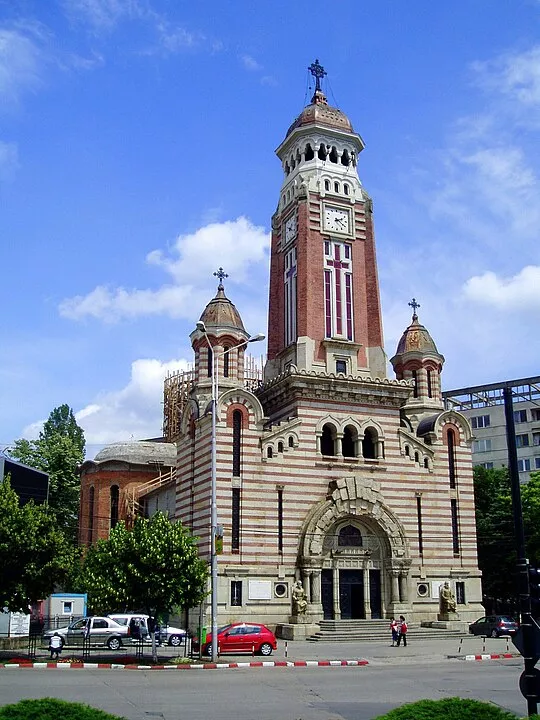
Cathedral St John the Baptist - Albacore70 - Famille Toma T. Socolescu, CC BY 3.0, via Wikimedia Commons
3 Reasons to visit Ploiești
Embark on a journey through time at the Petroleum Museum and uncover the intriguing history behind Ploiești's moniker as the "Capital of Black Gold." Discover how this city's reliance on oil has shaped its identity, and perhaps even strike it rich with knowledge about the world's first industrial-scale petroleum refinery!
Indulge your inner explorer at the bustling Obor market, where you can hunt for treasures ranging from fake branded clothes to Ukrainian contraband. With its eclectic array of goods, you're sure to find something unexpected and delightfully quirky amidst the chaotic charm of this vibrant marketplace.
Unwind and soak up the sunshine at Bucov Park, where you can frolic amidst the zoo, botanical gardens, and outdoor bars. Whether you're enjoying a traditional 'mici' for lunch or simply basking in the natural beauty, this park offers a perfect escape from the hustle and bustle of city life.
Brăila - Population 154,686
Brăila, situated in Muntenia, eastern Romania, serves as a pivotal port city on the Danube and proudly stands as the capital of Brăila County. Home to the Sud-Est Regional Development Agency, Brăila encompasses several vibrant districts including Centru, Viziru, and Călărași. Its urban layout, influenced by Ottoman fortifications, boasts symmetrical intersections and concentric streets.
This city breathes history through its 19th-century architectural marvels, meticulously preserved and restored. Among its notable landmarks are the Maria Filotti Theatre, the iconic Hotel Danubiu in Traian Square, and a collection of churches including the Greek Church and the Church of the Holy Archangels Michael and Gabriel. Brăila's cultural richness is further accentuated by the Palace of Culture, the History Museum, and the picturesque old Water Tower.
The city's commitment to revitalization is evident in projects like the renovation of the old center, funded by the European Union, aimed at bolstering tourism. Nature enthusiasts find solace in Brăila's enchanting parks, notably the Public Garden offering panoramic views of the Danube and the Monument Park housing the Brăila Museum's Natural Science exhibition.
Brăila's historical significance transcends its architectural charm. With origins dating back to the 14th century, it witnessed Ottoman rule and flourished as a vital Danube port during the 19th century. Notable figures like Prof. Ana Aslan and musician Johnny Raducanu hail from this illustrious city, adding to its cultural legacy.
In Brăila's Old Town, the rich tapestry of history unfolds around Traian Square, showcasing architectural gems like the Romanian Orthodox Church, the Greek Church adorned with frescoes by Gheorghe Tătărescu, and the Maria Filotti Theatre, a testament to the city's theatrical heritage.
For those enchanted by nature, a stroll through Brăila's public parks or the Danube River Promenade promises breathtaking views of the nearby Măcin Mountains, inviting visitors to immerse themselves in Brăila's delightful blend of history, culture, and natural beauty.
3 Reasons to visit Brăila
Dive into History: Brăila's rich past, dating back to the 14th century, offers a captivating journey through time. From its origins as Drinago to its Ottoman-era name Ibraila, the city's evolution mirrors the tapestry of Eastern European history, making it a must-visit for history enthusiasts.
Architectural Splendor: Wander through Brăila's Old Town, where 19th-century grandeur still echoes through elegant villas, majestic churches, and cultural landmarks like the Maria Filotti Theatre. The city's meticulously restored buildings, adorned with frescoes and steeped in history, create an enchanting ambiance that transports visitors to a bygone era.
Natural Beauty and Leisure: Beyond its historical and architectural treasures, Brăila invites visitors to bask in its natural splendor. Take a leisurely stroll along the Danube River Promenade for panoramic views of the Măcin Mountains or unwind in the expansive greenery of the Monument Park. With its blend of history, culture, and scenic beauty, Brăila offers an alluring escape for travelers seeking both exploration and relaxation.
Arad - Population 145,078
Situated at the crossroads of Crișana and Banat, Arad stands as a vibrant city with a rich tapestry of history and culture. As the third largest city in Western Romania, its allure lies in its multifaceted identity and notable landmarks.
Arad boasts a legacy steeped in cultural and educational significance, hosting one of Europe's earliest music conservatories and pioneering normal schools. Its multicultural heritage, shaped by various empires and regions, adds layers of intrigue to its storied past, making it a captivating destination for history enthusiasts.
With its stunning architectural landmarks, including the neoclassical Ioan Slavici Theater and the eclectic Administrative Palace, Arad dazzles visitors with its architectural splendor. From the imposing Fortified Town, reminiscent of Transylvanian fortresses, to the Art Nouveau marvels adorning Bulevardul Revolutiei, the city's architectural landscape is a testament to its dynamic history and artistic prowess.
Arad's religious diversity is reflected in its array of churches, synagogues, and cathedrals spanning centuries and architectural styles. Visitors can explore the Baroque elegance of the "St. Peter and Paul" Serbian Church, the Neo-gothic charm of the Red Church, or the Byzantine majesty of the Holy Trinity Cathedral, immersing themselves in the city's spiritual heritage.
From its bustling city center to the serene landscapes surrounding it, Arad beckons travelers with its blend of historical intrigue, architectural marvels, and cultural vibrancy. Whether wandering through its picturesque streets or delving into its rich history, a visit to Arad promises a memorable journey through time and tradition.
3 Reasons to visit Arad
Multicultural Heritage: Arad's rich history as a cultural crossroads offers a captivating experience, showcasing influences from Hungarian, German, Jewish, Serbian, and Bulgarian communities. Explore the city's diverse tapestry through its architecture, cuisine, and traditions, offering a unique glimpse into its multicultural heritage.
Architectural Splendor: Immerse yourself in Arad's stunning architectural landscape, featuring centuries-old fortresses, neoclassical theaters, and ornate churches. Marvel at landmarks like the Vauban-style Fortified Town, the elegant Ioan Slavici Classical Theatre, and the picturesque Red Church, each reflecting a different era and architectural style.
Historic Landmarks: Discover Arad's fascinating history through its array of historic landmarks, including the Statue of Liberty, the Arch of Triumph, and the Martyrs' Cross. These monuments commemorate significant events and figures, offering insight into the city's past and its enduring spirit.
Pitești - Population 141,275
Pitești, situated alongside the picturesque Argeș River in Romania, stands as the vibrant capital and largest city of Argeș County. This dynamic urban center boasts a rich historical background, with origins dating back to prehistoric times and formal mention in the 14th century. Renowned as a vital commercial and industrial hub, Pitești thrives as a strategic point on the A1 freeway, providing direct access to the national capital, Bucharest. Its pivotal role extends to railway connections, facilitated by a classification yard in nearby Bălilești.
Home to the renowned Arpechim oil refinery and a flourishing automotive industry centered around Automobile Dacia, Pitești has earned recognition as an economic powerhouse. Beyond its economic significance, Pitești holds historical importance as a former political center for the National Liberal Party and the influential Brătianu family. However, it also bears the weight of its past, notably marked by the distressing experimentation in brainwashing techniques at the notorious Pitești Prison during the communist era. Today, Pitești stands as a resilient city, blending its rich heritage with modern progress to offer visitors a multifaceted experience in the heart of Muntenia.
3 Reasons to visit Pitești
Explore Pitești's Rich History: Dive into the depths of Pitești's intriguing past, from its prehistoric origins to its pivotal role as a trading town in northern Wallachia. Discover the city's historical landmarks and learn about its evolution over the centuries, offering insights into its significance in Romanian history.
Experience Vibrant Culture and Innovation: Immerse yourself in Pitești's vibrant cultural scene, shaped by its status as a commercial and industrial hub. Explore the city's museums, theaters, and universities, where innovation and creativity thrive. From traditional performances to modern art exhibitions, Pitești offers a diverse range of cultural experiences for visitors to enjoy.
Enjoy Quirky Local Charm: Delight in the unique charm and character of Pitești, where historic architecture meets bustling markets and lively streets. Take a leisurely stroll along the river Argeș or explore the city's vibrant neighborhoods, soaking in the local atmosphere. With its blend of history, culture, and charm, Pitești promises a memorable and enjoyable visit for all.
Bacău - Population 136,087
Bacău, located in the heart of Bacău County, Romania, stands as a vibrant cultural center rooted in its rich history. With a population of 136,087 as of the 2021 census, it proudly ranks as the 14th largest city in Romania. Situated in the picturesque region of Moldavia, Bacău is adorned by the Carpathian Mountains, with the Bistrița River meandering through its landscape.
Home to a public university and several colleges, Bacău fosters intellectual growth and creativity. It boasts a distinguished literary heritage, being the birthplace of renowned Romanian poets George Bacovia and Vasile Alecsandri. The city's cultural scene is further enriched by the "Mihail Jora" Athenaeum, a Philharmonic Orchestra, and theaters that captivate audiences with their performances throughout the year.
Bacău embraces its multicultural character, evident in its thriving Jewish community, which has flourished here over the centuries. The city's architectural charm, characterized by its medieval Gothic buildings, serves as a testament to its illustrious past. Visitors are enchanted by the charming streets and alleys, reminiscent of a bygone era.
As a haven for nature lovers, Bacău offers lush parks, including the delightful Park of the Roses, inviting visitors to relax amidst scenic surroundings. The city's historical treasures, displayed in museums like the "Iulian Antonescu" History Museum and the Ethnography Museum, offer a fascinating glimpse into its past.
Bacău invites travelers to embark on a journey of discovery, uncovering its hidden gems and embracing its cultural heritage. Though often overlooked by tourists, Bacău beckons with its untouched charm and promises an unforgettable experience for those who dare to explore its streets and immerse themselves in its rich history and culture.
3 Reasons to visit Bacău
Explore Bacău's Rich Cultural Heritage: Delve into the city's historical treasures, including the "Iulian Antonescu" History Museum and the Precista Church, showcasing important finds from the Dacian era. Bacău's strong cultural identity is evident in its numerous orthodox monasteries and museums, offering a fascinating glimpse into its past.
Embrace Bacău's Natural Beauty: Experience the tranquility of Bacău's large parks, such as the romantic Park of the Roses. As a people-friendly city nestled amidst picturesque surroundings, Bacău invites visitors to unwind and explore its green spaces, providing a refreshing escape from urban hustle and bustle.
Discover Bacău's Hidden Gems: Venture off the beaten path to uncover Bacău's untouched historical heritage. From the medieval charm of its Gothic architecture to the serene ambiance of its orthodox monasteries, Bacău offers a unique and immersive travel experience for those seeking authenticity and cultural enrichment.
Sibiu - Population 134,309
Sibiu, known as Hermannstadt in German and Nagyszeben in Hungarian, is a captivating middle-sized town nestled in the heart of Transylvania, Romania. Steeped in history, Sibiu boasts a well-preserved medieval charm that draws visitors from far and wide.
Nicknamed "The Town with Eyes" due to its historical buildings with partly open rooftops, Sibiu is a renowned tourist destination celebrated for its rich culture, diverse architecture, and gastronomic delights. Its iconic houses with eyes have become a symbol of the town's unique character.
Sibiu's cultural significance is further underscored by its designation as the European Capital of Culture in 2007, a title it shared with Luxembourg City. The town's vibrant arts scene includes theaters, a philharmonic orchestra, and the annual Sibiu International Theatre Festival, which is the largest performance arts festival in the world since 2016.
Beyond its cultural offerings, Sibiu boasts a wealth of museums and parks, including the Brukenthal National Museum and the ASTRA National Museum Complex, which showcase the region's rich ethnographic heritage. The town's green spaces, such as the Sub Arini Park and the Dumbrava Sibiului Natural Park, offer opportunities for outdoor recreation and relaxation.
With its rich history, cultural diversity, and picturesque surroundings, Sibiu invites visitors to embark on a journey of discovery and exploration, promising an unforgettable experience for all who venture within its medieval walls.
3 Reasons to visit Sibiu
Rich Cultural Heritage: Sibiu, once the largest and wealthiest of the seven walled citadels in Transylvania, offers a captivating journey through history. Its Old Town, reminiscent of its prosperous past dominated by powerful guilds, boasts a distinctly Germanic atmosphere akin to Sighisoara and Brasov. Wander through narrow streets lined with 17th-century buildings, marvel at the impressive medieval walls, and explore iconic squares like Great Square and Little Square, each steeped in stories of the town's vibrant past.
Historic Landmarks and Museums: As a cradle of innovation and cultural significance, Sibiu is home to several notable landmarks and institutions. Visit the Brukenthal Museum, Romania's oldest museum housed in a stunning late-baroque palace, to admire its impressive art collections spanning centuries. Explore the Roman-Catholic Church, a magnificent baroque structure adorned with intricate decorations and vibrant frescoes. Ascend the Council Tower for panoramic views of the historic town and the surrounding Fagaras Mountains, and uncover the rich history of the region's first hospital, pharmacy, and the world's first homeopathic laboratory.
Architectural Marvels and Scenic Views: Immerse yourself in the architectural splendor of Sibiu's Upper Town, characterized by picturesque squares and stunning edifices. The Great Square, designated an architectural monument by UNESCO, serves as the heart of the city and hosts various community events, including the renowned Sibiu Christmas Market. Climb the Evangelic Church Tower for a breathtaking panorama of the Old Town, and stroll through charming squares like Huet Square, dominated by the majestic Evangelical Cathedral. Don't miss the chance to traverse the historic Passage of Steps, connecting the Upper and Lower Towns, and marvel at the rustic charm of Goldsmiths' Square and the iconic Bridge of Lies.


